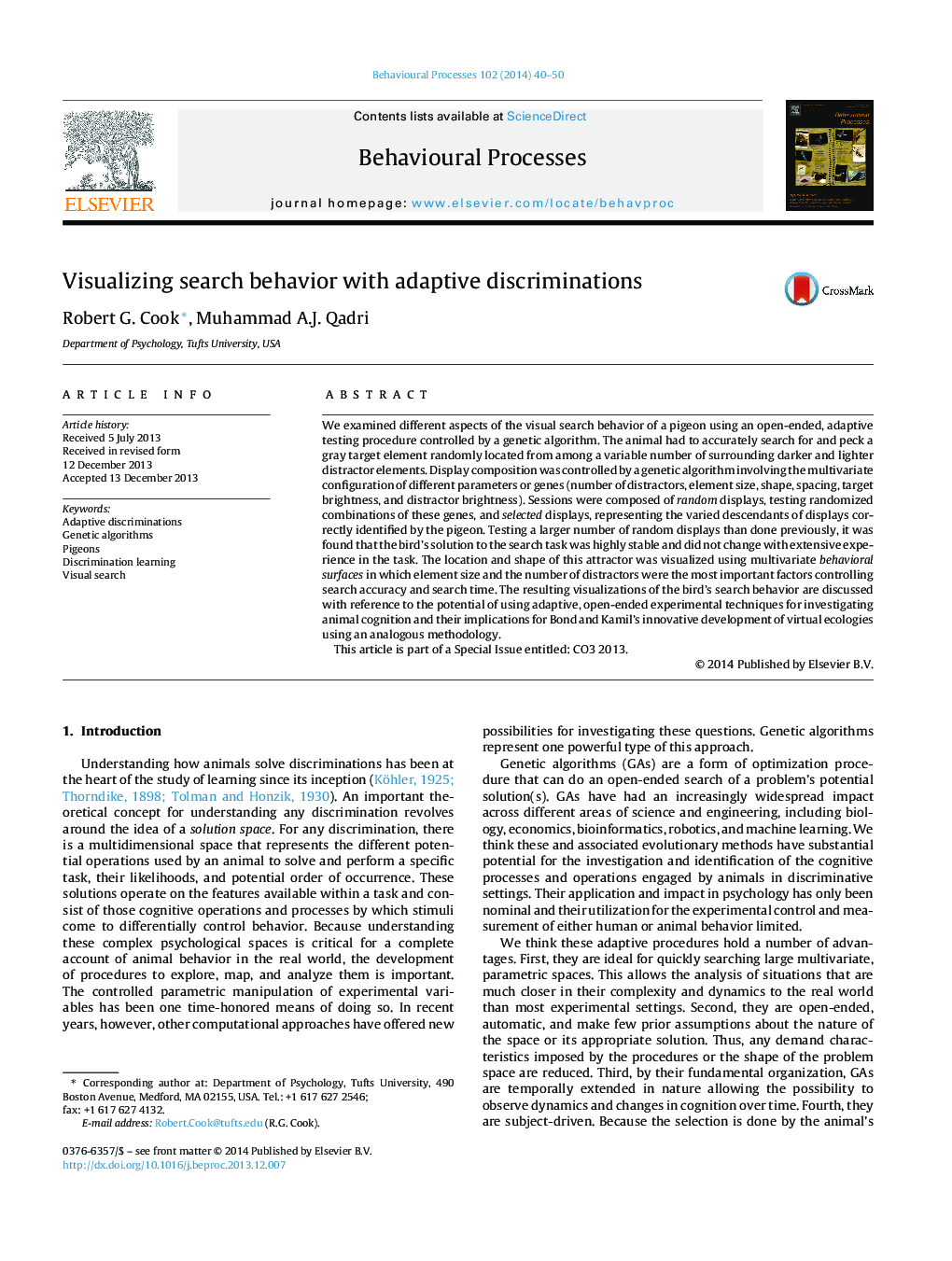| کد مقاله | کد نشریه | سال انتشار | مقاله انگلیسی | نسخه تمام متن |
|---|---|---|---|---|
| 2426776 | 1553177 | 2014 | 11 صفحه PDF | دانلود رایگان |
• Controlling experiments with genetic algorithms provides new insights into behavior.
• Visual search is principally controlled by number of distractors and stimulus size.
• The genetic algorithm repeatedly converged upon the same set of display conditions.
• Visualizing behavior with different multivariate metrics reveals new patterns.
We examined different aspects of the visual search behavior of a pigeon using an open-ended, adaptive testing procedure controlled by a genetic algorithm. The animal had to accurately search for and peck a gray target element randomly located from among a variable number of surrounding darker and lighter distractor elements. Display composition was controlled by a genetic algorithm involving the multivariate configuration of different parameters or genes (number of distractors, element size, shape, spacing, target brightness, and distractor brightness). Sessions were composed of random displays, testing randomized combinations of these genes, and selected displays, representing the varied descendants of displays correctly identified by the pigeon. Testing a larger number of random displays than done previously, it was found that the bird's solution to the search task was highly stable and did not change with extensive experience in the task. The location and shape of this attractor was visualized using multivariate behavioral surfaces in which element size and the number of distractors were the most important factors controlling search accuracy and search time. The resulting visualizations of the bird's search behavior are discussed with reference to the potential of using adaptive, open-ended experimental techniques for investigating animal cognition and their implications for Bond and Kamil's innovative development of virtual ecologies using an analogous methodology.This article is part of a Special Issue entitled: CO3 2013.
Journal: Behavioural Processes - Volume 102, February 2014, Pages 40–50
